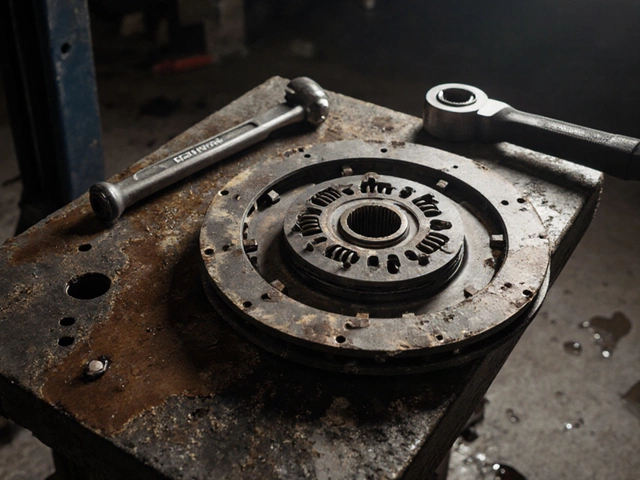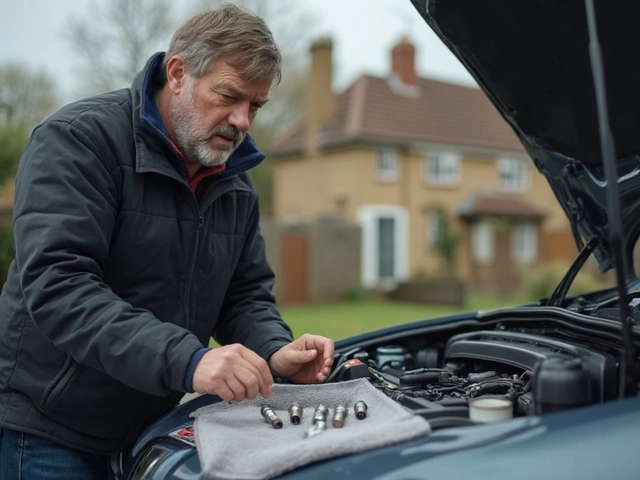Clogged Fuel Injector: What It Is, How to Spot It, and How to Fix It
If your car is stumbling, coughing, or just feels sluggish, a clogged fuel injector could be the culprit. Fuel injectors spray gasoline into the engine at high pressure. When they get blocked by dirt, debris, or old fuel residue, the spray becomes uneven and the engine suffers.
Common Signs of a Clogged Fuel Injector
First, listen for a rough idle. The engine may shake or vibrate more than usual when you’re stopped. Next, notice a drop in power during acceleration – you might have to press the pedal harder to get the same speed. A strong fuel smell, especially after the car has been sitting, is another red flag. Finally, check the fuel mileage; a sudden dip often points to injector trouble.
Why Injectors Get Clogged and How to Prevent It
Bad fuel is the main cause. Low‑quality gasoline contains more contaminants that settle inside the injector nozzle. Over time, moisture from the fuel can turn into tiny particles that block the tiny holes. Neglecting regular fuel filter changes also lets debris flow straight to the injectors. To keep them clean, use top‑tier fuel, change the fuel filter as per the manufacturer’s schedule, and consider a fuel system cleaner every 5,000‑10,000 miles.
When you suspect a clog, the quickest DIY test is a “spray test.” Locate the injector rail, remove the electrical connector, and have a friend crank the engine while you watch for a steady spray. If the fuel stream is thin, uneven, or stops intermittently, the injector is likely clogged.
If you’re comfortable with basic tools, you can clean the injector yourself. Soak the injectors in a commercial injector cleaner for the time the product recommends – usually a few hours. Then, use a low‑pressure spray bottle to flush out residue. For stubborn clogs, a professional ultrasonic cleaning service can restore the injector’s flow to factory specs.
Replacing a faulty injector is also an option. Most modern cars have one injector per cylinder, and they’re designed for easy removal. Make sure you disconnect the battery, relieve fuel pressure, and replace any O‑rings with new ones to avoid leaks. After installation, clear any error codes with an OBD‑II scanner and take the car for a short test drive.
Remember, ignoring a clogged injector can lead to more serious engine damage, higher fuel consumption, and costly repairs. Spotting the symptoms early and acting fast saves money and keeps your ride reliable.
At Northwich Tyres Centre, we offer injector cleaning and replacement services, plus a full range of car parts to keep your vehicle in top shape. Drop by for a quick check – we’ll get you back on the road with a smooth‑running engine.
 20 July 2025
20 July 2025
What Are the Signs of a Clogged Fuel Injector? Expert Guide to Identifying Fuel Injector Issues
Discover the telltale signs of a clogged fuel injector, learn how it impacts your engine's performance, and get helpful tips to identify and fix fuel system issues.
Latest Posts
-

Car Suspension Parts: What They Are and Why They Matter
-

Is MERV 11 the Right Choice for Your Home's Air Quality?
-

How Often Should a Clutch Be Replaced? Real-World Mileage and Signs of Wear
-

Choosing the Ultimate Exhaust System for Your Ride
-

Ignition Coil or Spark Plug Bad? How to Spot the Culprit Fast

0